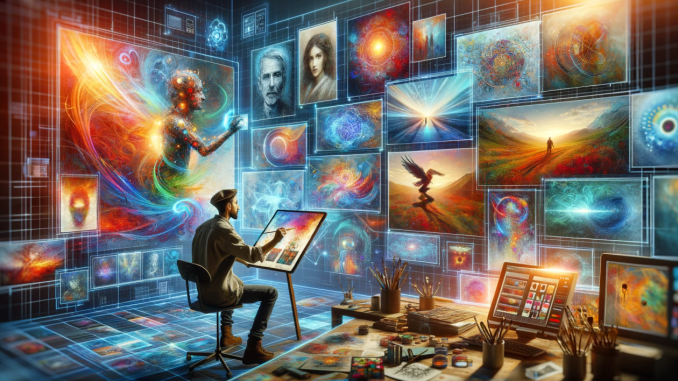
In the ever-evolving world of digital creativity, AI image editing is revolutionizing the way we enhance, manipulate, and transform visuals. From professional photographers to casual smartphone users, artificial intelligence has made advanced editing accessible to everyone. The future of image editing is no longer just about manual adjustments; it’s about intelligent algorithms that learn, adapt, and create stunning results with minimal effort.
The Rise of AI Image Editing
Gone are the days when mastering complex software was a prerequisite for producing high-quality images. AI image editing tools are now capable of automating tasks that once required hours of meticulous work. Whether it’s enhancing colors, removing backgrounds, or retouching photos, AI has made it easier, faster, and more efficient to achieve professional-grade results.
Applications like Adobe Photoshop’s AI-powered features, Luminar Neo, and even mobile apps like FaceApp are leading this transformation. These tools not only save time but also open up new creative possibilities, allowing users to focus more on the artistic vision rather than the technical process.
Key Innovations in AI Image Editing
- One-Click Enhancements: With AI, one-click solutions have become a reality. AI tools analyze the content of an image and apply enhancements based on learned patterns. For example, Adobe’s Sensei AI can detect faces, adjust lighting, and correct color balance instantly.
- AI-Generated Art: Tools like DALL-E and Midjourney allow users to create entirely new images from text prompts. These AI models are trained on vast datasets, enabling them to generate original art, manipulate existing images, and even create hyper-realistic scenes.
- Background Removal: Traditionally, removing backgrounds from images required careful selection and masking. AI-powered tools like Remove.bg can now achieve this with a single click, recognizing complex edges like hair or transparent objects with remarkable accuracy.
- Style Transfer and Filters: AI also excels in style transfer, where the essence of one image is applied to another. This feature, popularized by apps like Prisma, allows users to transform their photos into works of art in the style of famous painters, or create entirely unique visual effects.
- Content-Aware Fill: Another significant advancement is AI’s ability to intelligently fill in missing parts of an image. This can be used to remove unwanted objects or even reconstruct sections of a photo with content that seamlessly blends with the original.
The Creative Impact of AI Image Editing
While AI has made image editing more accessible, it has also sparked debates about the role of creativity. Critics argue that automating the editing process could reduce the artistry involved in visual storytelling. However, many creators see AI as a tool that enhances creativity rather than replaces it. By automating tedious tasks, AI frees up time for artists to focus on conceptual ideas and innovation.
In fact, AI has opened up entirely new creative avenues. Artists are experimenting with AI-generated art, combining human intuition with machine learning to create unprecedented visual experiences. These collaborations between human and machine are pushing the boundaries of what’s possible in the world of digital art.
Challenges and Ethical Considerations
With great power comes great responsibility, and AI image editing is no exception. The ease with which AI can manipulate images raises ethical concerns, particularly in areas like deepfakes and photo manipulation. As AI tools become more sophisticated, ensuring that they are used responsibly is crucial.
Moreover, issues related to copyright and intellectual property are surfacing as AI-generated art gains popularity. Who owns the rights to an image created by an AI model trained on millions of existing images? These questions are shaping the future of digital content and creativity.
Conclusion
AI image editing is not just a trend; it’s a paradigm shift in the way we create and consume visual content. With AI taking over mundane editing tasks, creatives have more time to explore new artistic directions. While challenges remain, the potential of AI to transform the world of image editing is undeniable. The future of creativity is here, and it’s powered by AI.
Leave a Reply